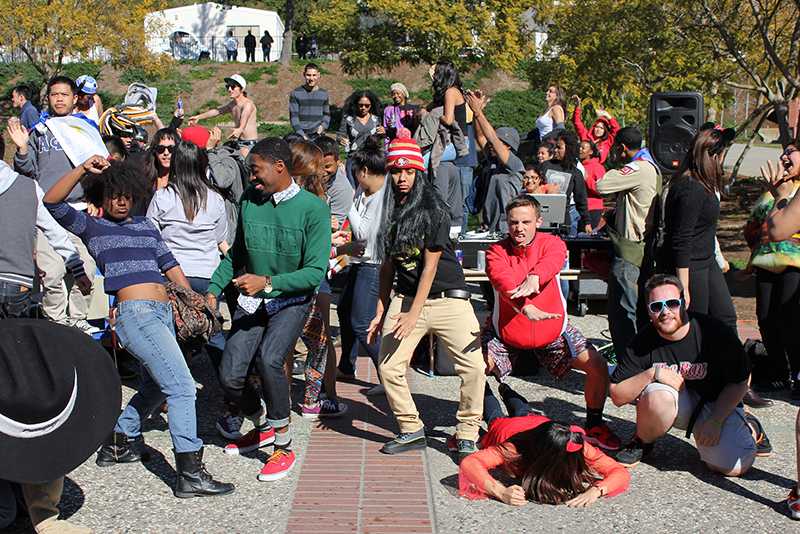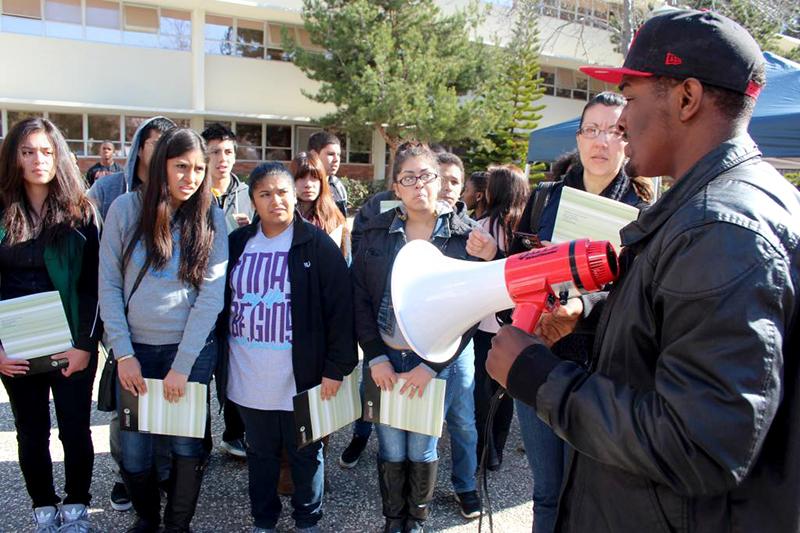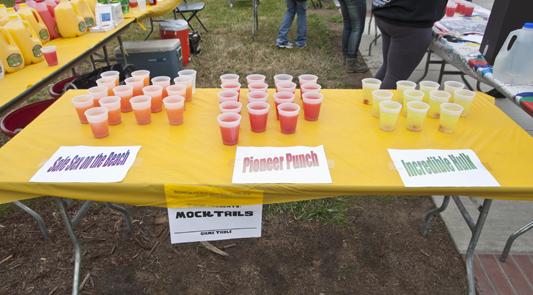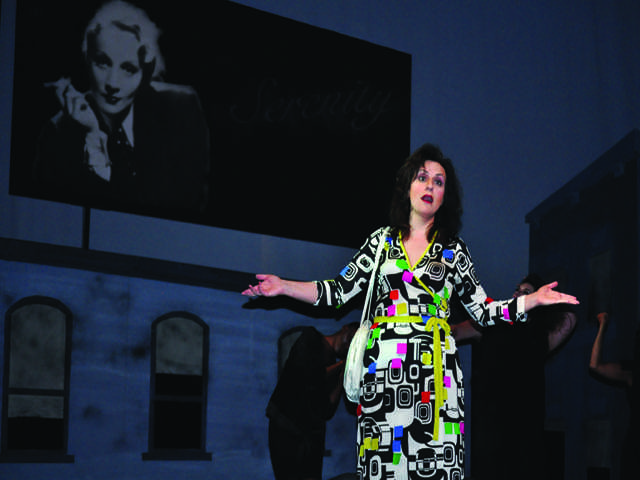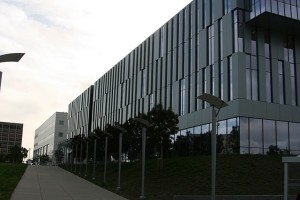 The sound of construction resonates through the dorms of California
State University East Bay (CSUEB). Dorm residents won’t need alarm clocks in the months to come. Diamond construction signs cover the site. Blueprint posters cover
construction tables. Slabs of concrete lay spread across the site,
forming a foundation for the building to come.
The sound of construction resonates through the dorms of California
State University East Bay (CSUEB). Dorm residents won’t need alarm clocks in the months to come. Diamond construction signs cover the site. Blueprint posters cover
construction tables. Slabs of concrete lay spread across the site,
forming a foundation for the building to come.
Despite the recent budget cuts in the California State University
system, CSUEB continues to build new facilities. The university
recently built a new administration building that will meet current
seismic standards and replace the old administration building. In the
upcoming fall quarter, CSUEB will also add a new recreation and
wellness building to the campus map, providing students with an environmentally friendly exercise and recreation facility.
In addition to the newest
buildings, the bid recently closed for the university›s new parking
structure. Construction is scheduled to begin in late September, early October. Out of the 23 campuses in the California
State University system, CSUEB is only one of nine undergoing high-level construction.
The California State University system has experienced severe budget
cuts in the last two years. The budget called for an additional $66.3 million cut for 2009/2010. According to the budget package passed by
the legislature in 2009, the reduction places the California State
University System $283 million below its operational needs, or
approximately 10 percent.
Student fees are scheduled to increase by
5 percent for the 2010-2011 school year and classes continue to be cut
from the school’s catalog. The California State University Board of
Trustees voted for the fee increase in response to the recent
legislative budget action. Still, CSUEB has found a way to continue
construction projects that will benefit the student body, despite the
steep costs of these facilities and the sacrifices students may have
to make.
Student Services
Administration Building
The most recent addition to the CSUEB campus is the brand new 100,000-square-foot administration building. Approximately 350 employees will
be stationed in the building. The project was under construction for
approximately three years and finally opened it’s doors in June of
this year.
According to Jim Zavagno, the
university director of planning design and construction, the
completion of the building was delayed primarily due to a state
mandated suspension of construction in late 2008 early 2009. The
construction was halted on projects throughout the state because of
the lack of funds and the state’s inability to sell construction
bonds.
Construction resumed on the building in February 2009.
The administration building was a state
funded building. According to Shawn Bibb, the university vice
president of administration and finance, the Student Services Administration building was paid for solely by state issued bonds, called general obligation bonds.
“The voters of the state approved
the funding several years ago by passing a proposition. We’re
fortunate. We received the allocation prior to these latest budget
cuts,” said Zavagno.
According to Christopher Brown, CSUEB executive
director of enterprise operations and the Foundation, “dollars are separate and distinct.” In other words, money is set aside and placed into a specific fund. Those funds can only be spent on things that
fall into that distinct category.
The administration building’s approximate construction costs add up to
around $34 million.
The new administration building was built as a
replacement for Warren Hall, the university’s old student services
building. According to Bibb, Warren Hall was built too close to
Hayward’s fault.
“Because it was built almost 40 years ago, Warren
Hall is not up to current seismic standards,” said Zavagno. The new
administration building meets the required seismic standards.
According to Bibb, Warren Hall is scheduled to be deconstructed soon
and brought into current seismic code.
“The top floors will be
removed after a complete hazardous materials abatement, and the
remaining six floors will undergo earthquake retrofitting,”
said Donna Hemmila, Associate Director of Public Relations.
The new
administration building will help replace the lost square footage from
the destruction of Warren Hall.
Recreation and Wellness Building
Construction for CSUEB’s new Recreation and Wellness Center is
currently underway. The $42 million, 55,000-square-foot building is
scheduled to open in November 2010. The facility is a two-story
building that will serve as a fitness center for students.
“The
first floor of the building will be dedicated to weight-lifting
equipment, while the second floor is dedicated mostly to
cardiovascular equipment,” said Krista Smith, Associated Students Inc.,
director of recreation and wellness.
The Recreation and Wellness Center will harbor a two-court gymnasium, indoor track, fitness and
activity rooms for aerobics, martial arts and dancing, locker rooms,
juice bar and administrative offices. The center will be home to the
intramural sport leagues at the school as well.
“This project is
referred to as a ‘non-state funded’ project, meaning the funding is
other than the traditional state support budget general fund or
general obligation bonds,” said Zavagno.
“Every enrolled student who owns a Bay Card and is paying the
university union recreation fee is eligible for access into the
Recreation and Wellness Center,” said Smith.
Specialty programs such
as intramural sports and dance and fitness classes may have a small
fee, but the fitness center, open recreation in the gymnasium, and all
the wellness center programs are included in student access to the
recreation and wellness center.
“The Recreation and Wellness Center will contribute greatly to campus life, as it will encourage interaction between students of all
backgrounds,” said University President Mohammed Qayoumi. The center will also provide jobs for more than 50 CSUEB students.
The recreation and wellness center is also an environmentally friendly
building from the design and construction of the building to lighting
and ventilation. The building will have red recycled glass in the
floors, air hand dryers, and energy-efficient work out equipment.
Marissa DeHerrera, the student ASI Director of Recreation and Wellness
said the center will use natural lighting to save on electricity.
“When artificial
lighting is needed, strategically placed sensors help determine the
need for additional light so lights only turn on as needed,” said
Smith.
Saeed Gatson and Michelle Garcia, intramural coordinators at the new recreation and wellness building, both agree that the building’s green
status will attract students while cutting costs at the same time.
Parking Garage
This month, CSUEB closed the bid for the future parking structure.
The college will soon decide on the winning contractor and
construction could begin as early as September. The structure is
estimated to be completed in Fall 2011. The parking garage will be
located at the corner of Harder Rd. and West Loop Rd. and take up part
of the campus’ current soccer practice field. The facility will
include a bridge connecting to Meiklejohn Hall for students parked on
the top levels of the garage, allowing for quick access onto campus.
The garage is CSUEB’s first parking facility and will help with the
high demand for parking on the campus. According to Brown, the campus
currently has 4,200 parking spots and the new garage will add an additional 1,100 spots, a 23 percent increase from the current parking
situation.
“Parking is really bad on campus. I sometimes have to leave an
entire 30 minutes early just to ensure that I find a spot so I’m
not late to my classes,” said Baghaman. According to Katie Glomb, 23,
a current CSUEB student, there are certain times in the day when every
parking space is filled on the campus.
Like the campus’ new Recreation and Wellness Center, the future
parking facility is also student-funded. The funds are collected from
parking fees, including student and faculty permit costs, and parking
citations ticketed from the university police department.
Parking
permits have gone up significantly the past two years for CSUEB students. In the 2008-2009 school year, permits cost students $60 per
quarter. In the upcoming school year CSUEB students will pay $130 per
quarter.
“The need for funds for the parking structure is one of the
reasons why fees have gone up,” said Brown. According to Brown, in 2009, students voted unanimously for the new parking garage.
Some students are still unhappy with the high increase in permit
costs.
“It›s unfortunate that the parking permits have gone up so
much. We’re not even guaranteed a spot,” says Glomb. According to
Brown, parking permits will not increase a great deal in the future.
According to Brown, in 2008-2009 when the university was charging $60
a quarter, CSUEB had the second lowest parking fee in the California
State University System. CSUEB now charges one of the highest prices
for parking permits.
CSUEB’s neighboring schools, San Jose State University and San Francisco State University, have lower
parking fees. San Jose State charges students $192 per semester,
while San Francisco charges $225 per semester, both less expensive than CSUEB for the same number of days to park.
“Sacrifices will have to be made to get sufficient
parking. But less aggravation in the morning is worth it. I just
hope it’s finished by the time I graduate, because I’m paying for it,” said Bagaman.
The new parking garage will attract new students and keep the current
students interested.
“We need to provide a good service to students,
or they will go elsewhere. We try to keep the costs as low as
possible,” says Brown. According to Brown, limited parking pushes
students away.
“Students are what make up a college. If they want us to continue
going to CSUEB, it›s necessary to keep us happy,” says Glomb.


